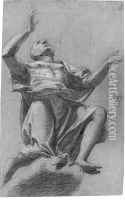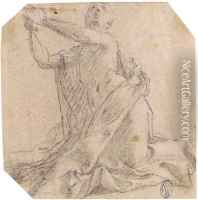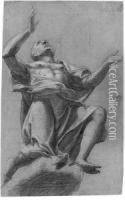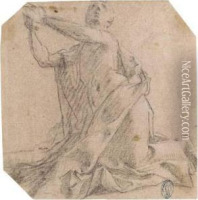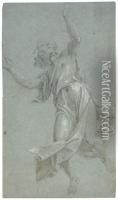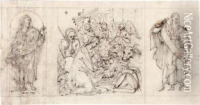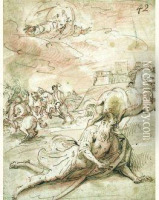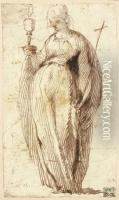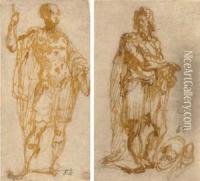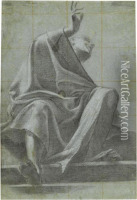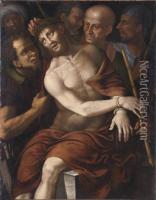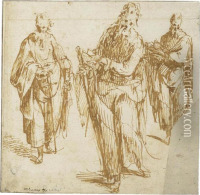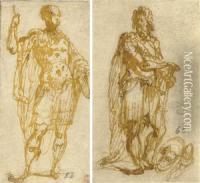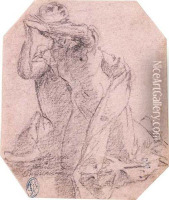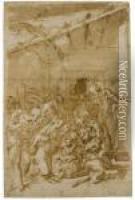Carlo Urbino Paintings
Carlo Urbino, born in Crema, Lombardy, in 1525, was an Italian painter and draughtsman active during the Renaissance period. His work is often overshadowed by the luminaries of his time, yet he made significant contributions to the art world, particularly in the realms of mannerism and the intricate detailing of religious themes. Urbino's early life is somewhat obscured in history, but it is known that he was deeply influenced by the works of his contemporaries in the Lombardy region and beyond.
Urbino's career is marked by his devotion to religious subjects, with his paintings characterized by their emotional depth and attention to detail. He was particularly adept at fresco painting, a skill that led him to work on various significant projects in churches and public buildings throughout Lombardy. His style was influenced by the likes of Leonardo da Vinci and Michelangelo, reflecting the mannerist qualities of the time with elongated figures and exaggerated poses.
In addition to his painting, Carlo Urbino is reputed for his drawings and sketches, which exhibit a meticulous understanding of human anatomy and the subtleties of facial expressions. These works not only showcase his technical skill but also his ability to convey complex human emotions and narratives through his art.
Despite his contributions, Urbino's name is not as widely recognized as some of his contemporaries. Much of his work was collaborative, contributing to larger projects alongside other artists, which may account for the relative obscurity of his individual legacy. Nevertheless, his work is preserved in several Italian museums, where it continues to be studied and appreciated for its artistic and historical value.
Urbino's death in 1585 marked the end of a career that, while not widely celebrated, was deeply impactful in the context of Renaissance art. His dedication to religious themes and his mastery of the fresco technique leave a lasting legacy that offers insight into the evolution of Italian Renaissance art. Urbino's life and work exemplify the mannerist style's transition towards the Baroque, making him an important figure in the study of this pivotal period in art history.
